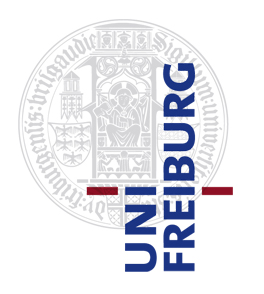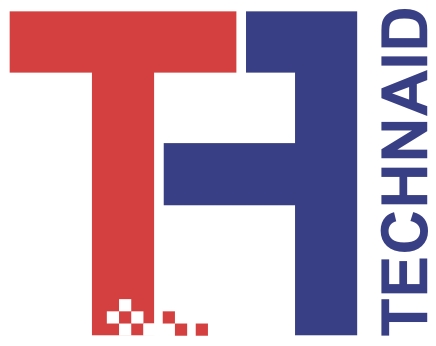| |
 CSIC will act as project coordination institution and technical developer in those aspects related to the analogous mechanical adaptation (modification of morphology and of kinematic structure) of the bipedal robot. In order to do so, CSIC will lead the definition of the conceptual design of robot, controller and benchmarking scheme, the biomechanical human models and will contribute to modelling neuromotor mechanisms in human gait. As to the behavioural control scheme, CSIC will define a learning scheme to drive the generation of gait skills. CSIC will act as project coordination institution and technical developer in those aspects related to the analogous mechanical adaptation (modification of morphology and of kinematic structure) of the bipedal robot. In order to do so, CSIC will lead the definition of the conceptual design of robot, controller and benchmarking scheme, the biomechanical human models and will contribute to modelling neuromotor mechanisms in human gait. As to the behavioural control scheme, CSIC will define a learning scheme to drive the generation of gait skills.
|
 UniKl will be mainly responsible for the design of the behaviour based control approach. UniKL will also be in charge of tuning the control parameters during the walking process because of the feedback information from the environment. The simulation for controlling the walking and its corresponding experiment on the H2R biped are the main focus of UniKL in this project. UniKl will be mainly responsible for the design of the behaviour based control approach. UniKL will also be in charge of tuning the control parameters during the walking process because of the feedback information from the environment. The simulation for controlling the walking and its corresponding experiment on the H2R biped are the main focus of UniKL in this project.
|
 The contributions of VUB to this project are specifically related to the use of adaptable compliant actuators and the use of passive elements. VUB has a great deal of experience with these types of actuation. VUB will contribute to the conceptual design, the study of the mechanical properties and the development of mono- and bi-articular compliant actuators. A procedure will be established to select the most appropriate settings for the control and design parameters of the compliant actuators. The properties of a combination of passive elements with compliant actuation will be studied in view of reducing the size and weight of the motors The contributions of VUB to this project are specifically related to the use of adaptable compliant actuators and the use of passive elements. VUB has a great deal of experience with these types of actuation. VUB will contribute to the conceptual design, the study of the mechanical properties and the development of mono- and bi-articular compliant actuators. A procedure will be established to select the most appropriate settings for the control and design parameters of the compliant actuators. The properties of a combination of passive elements with compliant actuation will be studied in view of reducing the size and weight of the motors
|
 UMG-GOE will be represented in this project by the Department of NeuroRehabilitation Engineering (NRE) and the EU Liaison Office/Department of International Relations (short for EU Office hereinafter). NRE has excellent research capabilities in EMG signal processing, neurophysiology modeling, and the analysis of human locomotion. Key facilities include high-density surface and thin-film intra-muscular EMG systems, portable EMG systems, motion analysis systems, TMS, and EEG systems. The EU Office located at the Department of International Relations headed by Ms. Christiane Hennecke, M.A., has profound and long-standing experience with the administration and management of EU-funded research projects since FP5 as well as Marie Curie actions in FP6 and FP7. The EU Office cooperates closely with the technology transfer organisation MBM ScienceBridge, who is a third party of UMG-GOE. The Head of NRE, Prof. Dario Farina, has experience in several EU projects. UMG-GOE will be represented in this project by the Department of NeuroRehabilitation Engineering (NRE) and the EU Liaison Office/Department of International Relations (short for EU Office hereinafter). NRE has excellent research capabilities in EMG signal processing, neurophysiology modeling, and the analysis of human locomotion. Key facilities include high-density surface and thin-film intra-muscular EMG systems, portable EMG systems, motion analysis systems, TMS, and EEG systems. The EU Office located at the Department of International Relations headed by Ms. Christiane Hennecke, M.A., has profound and long-standing experience with the administration and management of EU-funded research projects since FP5 as well as Marie Curie actions in FP6 and FP7. The EU Office cooperates closely with the technology transfer organisation MBM ScienceBridge, who is a third party of UMG-GOE. The Head of NRE, Prof. Dario Farina, has experience in several EU projects.
|
 The contribution of UKLFR is focused on the intermediate level cognitive mechanisms in relation to flexibility of disturbance balancing in face of changing environmental conditions and learning to compensate self-produced disturbances and predicting and anticipating external disturbances, confirming human-like behavior by performing also human experiments. Making use of the postural control laboratory and the motion platform, we will obtain quantitative data (in terms of Bode plots) in response to support surface tilt and translational acceleration stimuli, as well as pull and visual stimuli. These experiments will also be performed with UMG-GOE when investigating muscle and shared synergy during external disturbances as well as modularity in the reflex responses across behavioral conditions. Improving sensory estimates with visual-vestibular fusion will be performed. The contribution of UKLFR is focused on the intermediate level cognitive mechanisms in relation to flexibility of disturbance balancing in face of changing environmental conditions and learning to compensate self-produced disturbances and predicting and anticipating external disturbances, confirming human-like behavior by performing also human experiments. Making use of the postural control laboratory and the motion platform, we will obtain quantitative data (in terms of Bode plots) in response to support surface tilt and translational acceleration stimuli, as well as pull and visual stimuli. These experiments will also be performed with UMG-GOE when investigating muscle and shared synergy during external disturbances as well as modularity in the reflex responses across behavioral conditions. Improving sensory estimates with visual-vestibular fusion will be performed.
|
 The contribution of Technaid to the project is twofold: on the one hand it will lead the dissemination and exploitation activities in H2R. On the other hand, the company will support the consortium in those activities related to development of sensory systems to be integrated in the H2R biped. In particular Technaid will produce customized inertial sensors for the development of the vestibular system of the robot (see DEC method described in section B1.2.6) The contribution of Technaid to the project is twofold: on the one hand it will lead the dissemination and exploitation activities in H2R. On the other hand, the company will support the consortium in those activities related to development of sensory systems to be integrated in the H2R biped. In particular Technaid will produce customized inertial sensors for the development of the vestibular system of the robot (see DEC method described in section B1.2.6)
|





